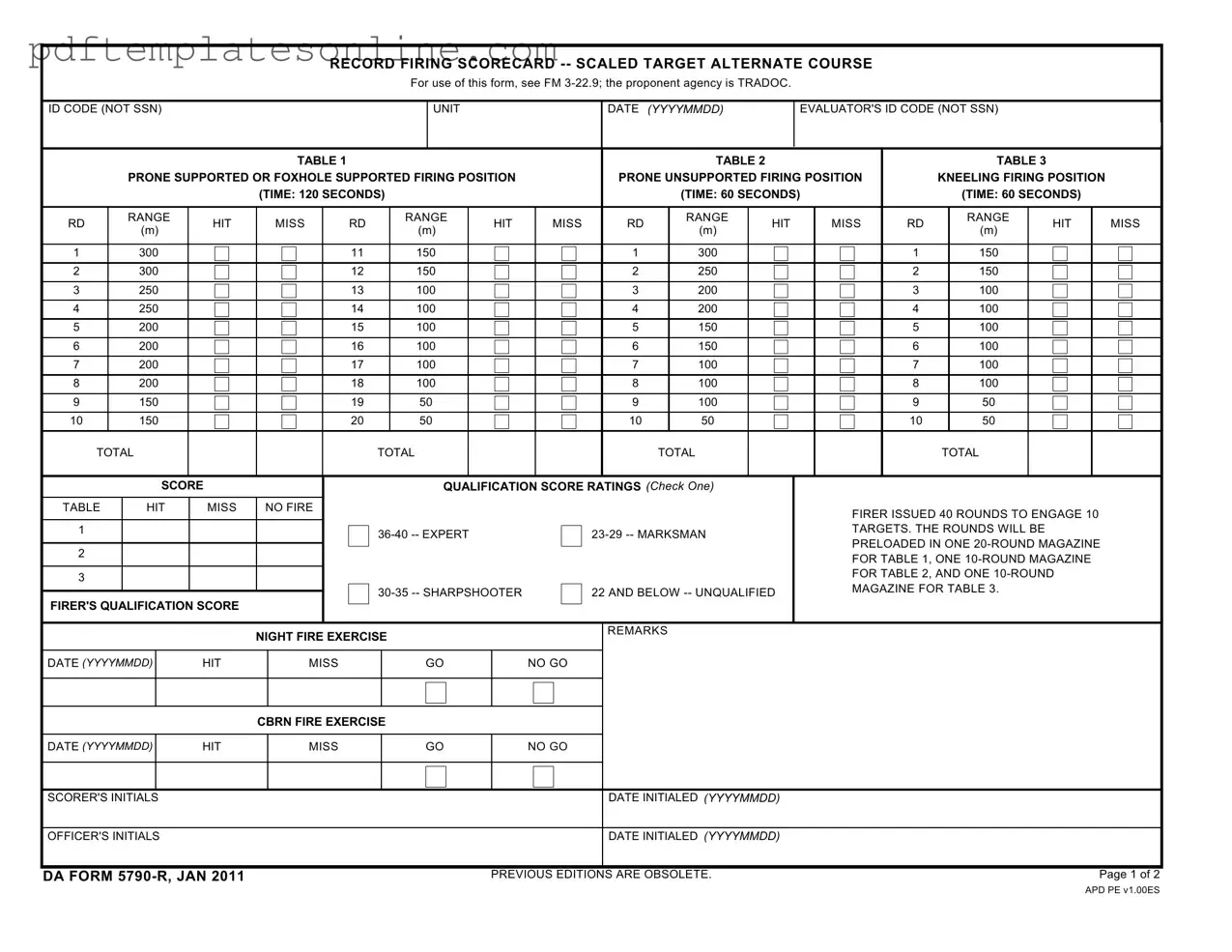When filling out the DA Form 5790 R, individuals often overlook important details that can lead to errors in scoring or qualification. One common mistake is failing to use the correct identification codes. Instead of entering their Social Security Number (SSN), users must provide their ID code. This oversight can cause confusion and delays in processing the form. Always double-check that the ID code is entered correctly to avoid complications.
Another frequent error occurs in the scoring section. Many people forget to accurately tally their hits and misses for each firing position. Each table has specific scoring rules, and miscalculating these can affect the overall qualification score. For instance, in Table 1, only two hits can be scored per silhouette. If a firer mistakenly records three hits, it could lead to disqualification. It is essential to follow the scoring guidelines meticulously.
Additionally, some individuals neglect to complete the remarks section. This area is crucial for noting any special circumstances or issues that arose during the qualification. If a firer experienced equipment malfunctions or other relevant incidents, these should be documented. Omitting this information can lead to misunderstandings about the qualification process and results.
Lastly, many users fail to ensure that all required initials and dates are present on the form. Both the scorer's and officer's initials, along with the corresponding dates, are necessary to validate the document. Without these signatures, the form may be considered incomplete. Always verify that all sections are filled out and signed before submitting the form to prevent unnecessary delays in processing.
